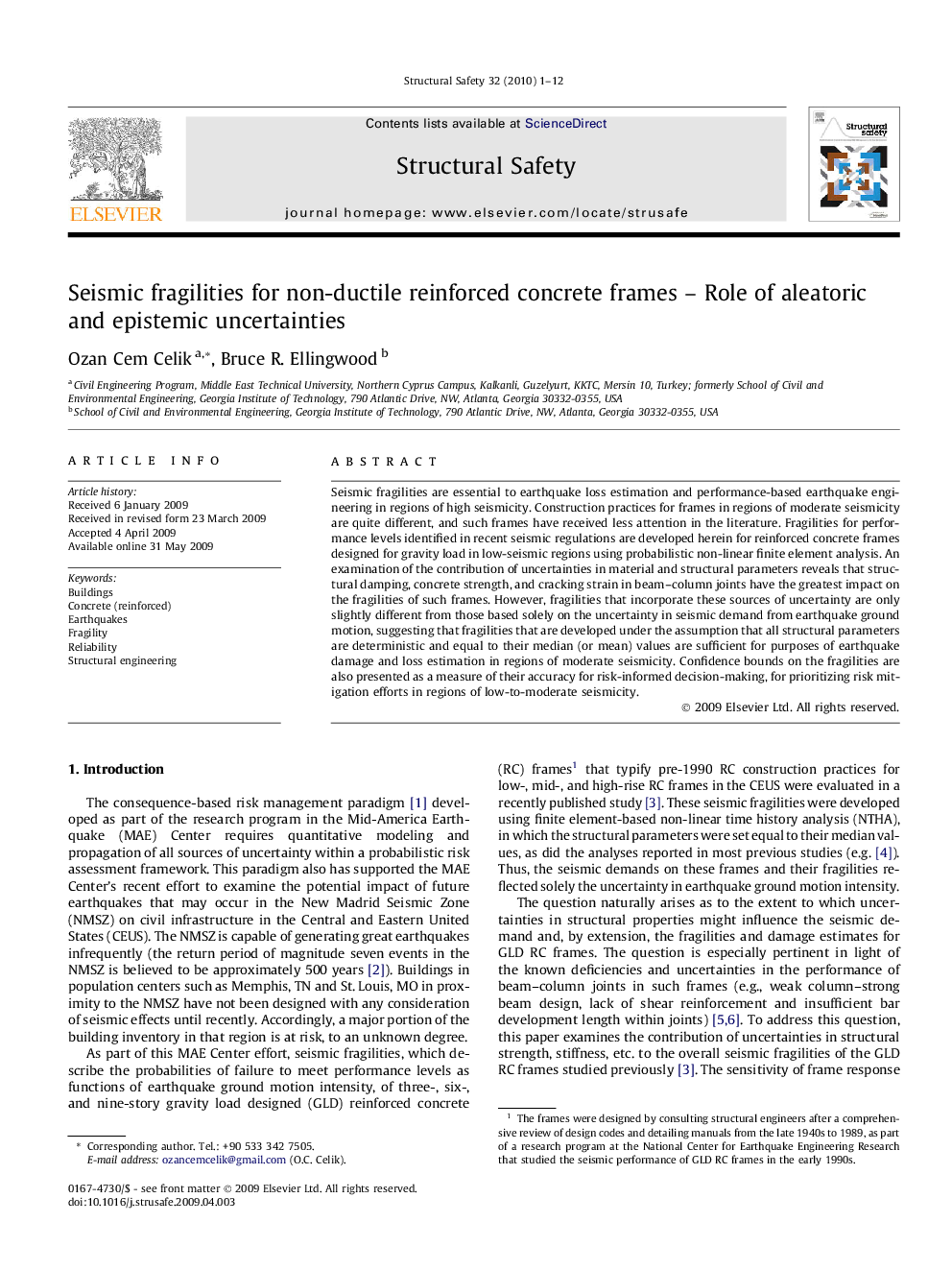| Article ID | Journal | Published Year | Pages | File Type |
|---|---|---|---|---|
| 307826 | Structural Safety | 2010 | 12 Pages |
Seismic fragilities are essential to earthquake loss estimation and performance-based earthquake engineering in regions of high seismicity. Construction practices for frames in regions of moderate seismicity are quite different, and such frames have received less attention in the literature. Fragilities for performance levels identified in recent seismic regulations are developed herein for reinforced concrete frames designed for gravity load in low-seismic regions using probabilistic non-linear finite element analysis. An examination of the contribution of uncertainties in material and structural parameters reveals that structural damping, concrete strength, and cracking strain in beam–column joints have the greatest impact on the fragilities of such frames. However, fragilities that incorporate these sources of uncertainty are only slightly different from those based solely on the uncertainty in seismic demand from earthquake ground motion, suggesting that fragilities that are developed under the assumption that all structural parameters are deterministic and equal to their median (or mean) values are sufficient for purposes of earthquake damage and loss estimation in regions of moderate seismicity. Confidence bounds on the fragilities are also presented as a measure of their accuracy for risk-informed decision-making, for prioritizing risk mitigation efforts in regions of low-to-moderate seismicity.
